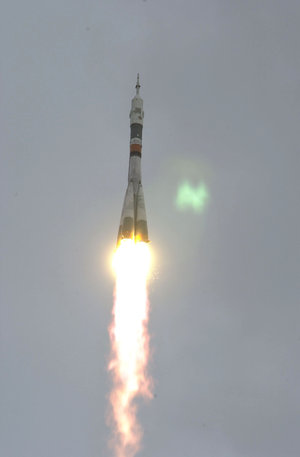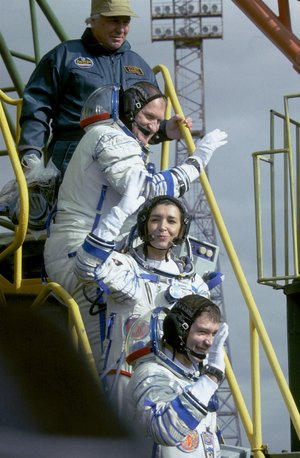Accept all cookies Accept only essential cookies See our Cookie Notice

About ESA
The European Space Agency (ESA) is Europe’s gateway to space. Its mission is to shape the development of Europe’s space capability and ensure that investment in space continues to deliver benefits to the citizens of Europe and the world.
Highlights
ESA - United space in Europe
This is ESA ESA facts Member States & Cooperating States Funding Director General Top management For Member State Delegations European vision European Space Policy ESA & EU Space Councils Responsibility & Sustainability Annual Report Calendar of meetings Corporate newsEstablishments & sites
ESA Headquarters ESA ESTEC ESA ESOC ESA ESRIN ESA EAC ESA ESAC Europe's Spaceport ESA ESEC ESA ECSAT Brussels Office Washington OfficeWorking with ESA
Business with ESA ESA Commercialisation Gateway Law at ESA Careers Cyber resilience at ESA IT at ESA Newsroom Partnerships Merchandising Licence Education Open Space Innovation Platform Integrity and Reporting Administrative Tribunal Health and SafetyMore about ESA
History ESA Historical Archives Exhibitions Publications Art & Culture ESA Merchandise Kids Diversity ESA Brand Centre ESA ChampionsLatest
Space in Member States
Find out more about space activities in our 23 Member States, and understand how ESA works together with their national agencies, institutions and organisations.
Science & Exploration
Exploring our Solar System and unlocking the secrets of the Universe
Go to topicAstronauts
Missions
Juice Euclid Webb Solar Orbiter BepiColombo Gaia ExoMars Cheops Exoplanet missions More missionsActivities
International Space Station Orion service module Gateway Concordia Caves & Pangaea BenefitsLatest
Space Safety
Protecting life and infrastructure on Earth and in orbit
Go to topicAsteroids
Asteroids and Planetary Defence Asteroid danger explained Flyeye telescope: asteroid detection Hera mission: asteroid deflection Near-Earth Object Coordination CentreSpace junk
About space debris Space debris by the numbers Space Environment Report In space refuelling, refurbishing and removingSafety from space
Clean Space ecodesign Zero Debris Technologies Space for Earth Supporting Sustainable DevelopmentApplications
Using space to benefit citizens and meet future challenges on Earth
Go to topicObserving the Earth
Observing the Earth Future EO Copernicus Meteorology Space for our climate Satellite missionsCommercialisation
ESA Commercialisation Gateway Open Space Innovation Platform Business Incubation ESA Space SolutionsLatest
Enabling & Support
Making space accessible and developing the technologies for the future
Go to topicBuilding missions
Space Engineering and Technology Test centre Laboratories Concurrent Design Facility Preparing for the future Shaping the Future Discovery and Preparation Advanced Concepts TeamSpace transportation
Space Transportation Ariane Vega Space Rider Future space transportation Boost! Europe's Spaceport Launches from Europe's Spaceport from 2012Latest

Soyuz TM-33 Andromède mission patch, 2001
Thank you for liking
You have already liked this page, you can only like it once!
In the ‘Andromède’ mission, ESA astronaut Claudie Haigneré (FR)
was the first European female astronaut to travel to the International Space Station (ISS) in October 2001. Haigneré stayed on the ISS for 8 days during her 10-day Soyuz TM-33 flight. With her were Russians Victor Afanasyev and Konstantin Kozeyev.
Haigneré had asked CNES to commission women artists to create the mission logo, and French graphic designer Virginie Enlart was chosen. She used a combination of imagery, starting with the Andromeda constellation and using the chains which bound the mythological princess Andromeda to a rock (from which she was freed by Perseus) as an echo to the DNA chain. The central female figure (a cave-dweller from the valley of the Tagus), signifying how far we have developed in 4000 years; her silhouette even hinting at what a spacesuit might be!
The background is taken from a terracotta spindle whorl, evoking the form of high-precision instruments, such as satellites, the ISS, geometrical diagrams and mathematical equations. According to Enlart, the colours add further weight to the various elements: the gold is shaped as a crescent moon, yellow as the Sun with its eruptions, light blue is reminiscent of Earth's atmosphere as seen from above, the dark blue brings a hint of coolness, suggesting the dark void of the upper atmosphere and wider Universe, the red links the typography to the main character and the dynamism of the mission, and silver denotes the high technological aspect, at the very heart of this adventure.
-
CREDIT
CNES/Zigzag/V. Enlart -
LICENCE
ESA Standard Licence

Launch of Andomède mission from Baikonur

Launch of Andomède mission from Baikonur

Andromède mission - Soyuz capsule descends to Earth

Transfer of Soyuz to launch pad















 Germany
Germany
 Austria
Austria
 Belgium
Belgium
 Denmark
Denmark
 Spain
Spain
 Estonia
Estonia
 Finland
Finland
 France
France
 Greece
Greece
 Hungary
Hungary
 Ireland
Ireland
 Italy
Italy
 Luxembourg
Luxembourg
 Norway
Norway
 The Netherlands
The Netherlands
 Poland
Poland
 Portugal
Portugal
 Czechia
Czechia
 Romania
Romania
 United Kingdom
United Kingdom
 Slovenia
Slovenia
 Sweden
Sweden
 Switzerland
Switzerland

























